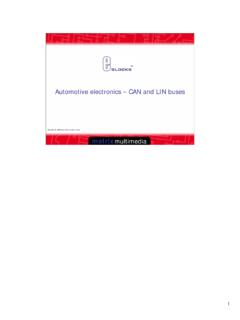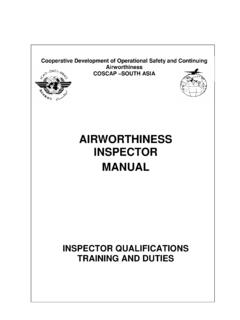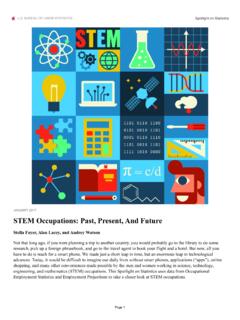Transcription of Telecommunications Design Standards
1 1 Telecommunications Design Standards Revision October 4, 2017 Colorado State University 2 Table of Contents Chapter 1: Introduction .. 3 1. Departments Involved in Design Process .. 3 2. Applicable Standards .. 3 3. general Guidelines .. 4 4. Equipment and Materials Specifications .. 4 Chapter 2: Horizontal Infrastructure .. 6 Chapter 3: Communications Rooms .. 9 1. Main Distribution Room MDF .. 9 2. Intermediate Distribution Room (IDF) .. 11 3. Campus Room Types .. 13 4. Grounding and Bonding.
2 14 Chapter 4: Riser/Building Backbone Infrastructure .. 17 Chapter 5: Building Entrance Infrastructure .. 19 1. general .. 19 2. University Policy Governing Entrance Infrastructure .. 19 Chapter 6: Outside Plant Infrastructure .. 20 1. Introduction and Project Conditions .. 20 2. Landscaping, Irrigation Systems, Site Protection and Excavation .. 20 3. Directional Boring Specifications .. 21 4. Trenching .. 21 5. Steam Tunnel Cable Installation .. 22 Chapter 7: Network Switches .. 23 Chapter 8: Wireless Access Points and Devices.
3 24 Chapter 9: 25 Chapter 10: TV/Video .. 26 Chapter 11: Emergency and Inter/Intra Building Life and Safety Infrastructure .. 27 Appendix A Network Switch Protocol Specifications .. 28 Revision History .. 29 3 Chapter 1: Introduction 1. Departments Involved in Design Process This document provides Design specifications for voice, video and data communications infrastructure at Colorado State University (CSU), otherwise referred to as the University. Several departments are responsible for this communications infrastructure and should be involved in the Design process.
4 These include 1) CSU Telecommunications for the physical infrastructure, 2) Academic Computing and Networking Services (ACNS) for the network equipment and video and 3) Classroom Support Services for Smart classrooms. Contacts for these departments are given below. Table 1. Contacts Department Name Phone Academic Computing & Networking Services (ACNS) Greg Redder (970) 491-7222 Classroom Support Services Al Powell (970) 491-6226 Telecommunications Project Planner Pat Demchok (970) 491-1148 The individuals above shall be consulted initially during all phases of Design .
5 As questions arise during the construction phase, the above individuals are also to be consulted. 2. Applicable Standards Telecommunications physical infrastructure as defined by the Telecommunications Industry Association/Electronics Industry Association, or TIA/EIA, consists of six elements: 1) building entrance, 2) building main Telecommunications room or Main Distribution Frame (MDF), 3) backbone cabling, 4) Telecommunications closets or Intermediate Distribution Frames (IDFs), 5) horizontal cabling, and 6) work area. These elements will be augmented by a seventh element, networking equipment, required to provide a minimum level of data service for the building.
6 Also included are basic specifications for the delivery of broadband television services via a hybrid single-mode fiber optics and coaxial cable system. In general , the following Standards at a minimum shall be observed for Telecommunications infrastructure and are incorporated herein by reference: -- TIA/EIA 568A Commercial Building Telecommunications Cabling Standard TIA/EIA 569 Commercial Building Standard for Telecommunications Pathways and Spaces TIA/EIA 607-A-2002 Commercial Building Grounding and Bonding Requirements for Telecommunications Most current edition NEC 4 BICSI DD 120-Grounding Fundamentals for TELCO Facilities Chapter 4 Telecommunications Systems Grounding (as reference) IEEE Systimax Structured Cabling System (SCS)
7 Standards This document provides interpretation of the Standards referenced in the previous paragraph and provides additional detail, in some cases superseding those Standards . Where Systimax guidelines differ from TIA/EIA Standards , the Systimax guidelines supersede the TIA/EIA standard. Should the contractor require additional interpretation of these Design guidelines, the contractor shall contact the designated University representative (Table 1). Table 2. Standards Hierarchy System Purpose Substitutions TIA/EIA/NEC/BICSI Grounding, Bonding, and Fire-stopping None Corning Fiber Optics Glass None Systimax Structured System (SCS) Category 5e Copper Cabling None TIA/EIA Data None TIA/EIA Voice Must be pre-approved in writing 3.
8 general Guidelines Integral to the Telecommunications infrastructure in buildings are the secure communications rooms, consisting of the MDF and, generally, one or more IDFs. These rooms must be secure, environmentally conditioned and clean before Telecommunications can work in them, especially as fiber must be terminated in these rooms requiring a very clean environment. Expensive and delicate networking devices, requiring environmental conditioning, also are housed in these rooms. In this regard, the MDF and IDFs shall be completed including environmental conditioning and completed early in the project timetable.
9 In particular, all penetrations shall be completed and sealed ( , capped) before Telecommunications work can continue in these environments. 4. Equipment and Materials Specifications Check with Telecommunications Contact, Table 1, to ensure use of the latest materials list. Note that there are some materials for which no substitutions are allowed. Where substitutions are allowed, these must be pre-approved in writing in an addendum prior to the final Design bid. Questions about substitutions of these materials should be referred to the University designated representative (Table 1 Contacts).
10 5 5. Contractor Certifications CSU requires contractors to be a Systimax Solutions Premier or Select Installation Partner, and listed on Approval of certification must be submitted to Telecommunications . In addition, Telecommunications requires that contractor provide Technicians and Installers certified by the Building Industry Consulting Service International, Inc. (BICSI) permanently assigned for the duration of the CSU project. Telecommunications requires a minimum of one (1) BICSI certified technician and a ratio of one (1) BICSI certified installer to three (3) installation workers.





